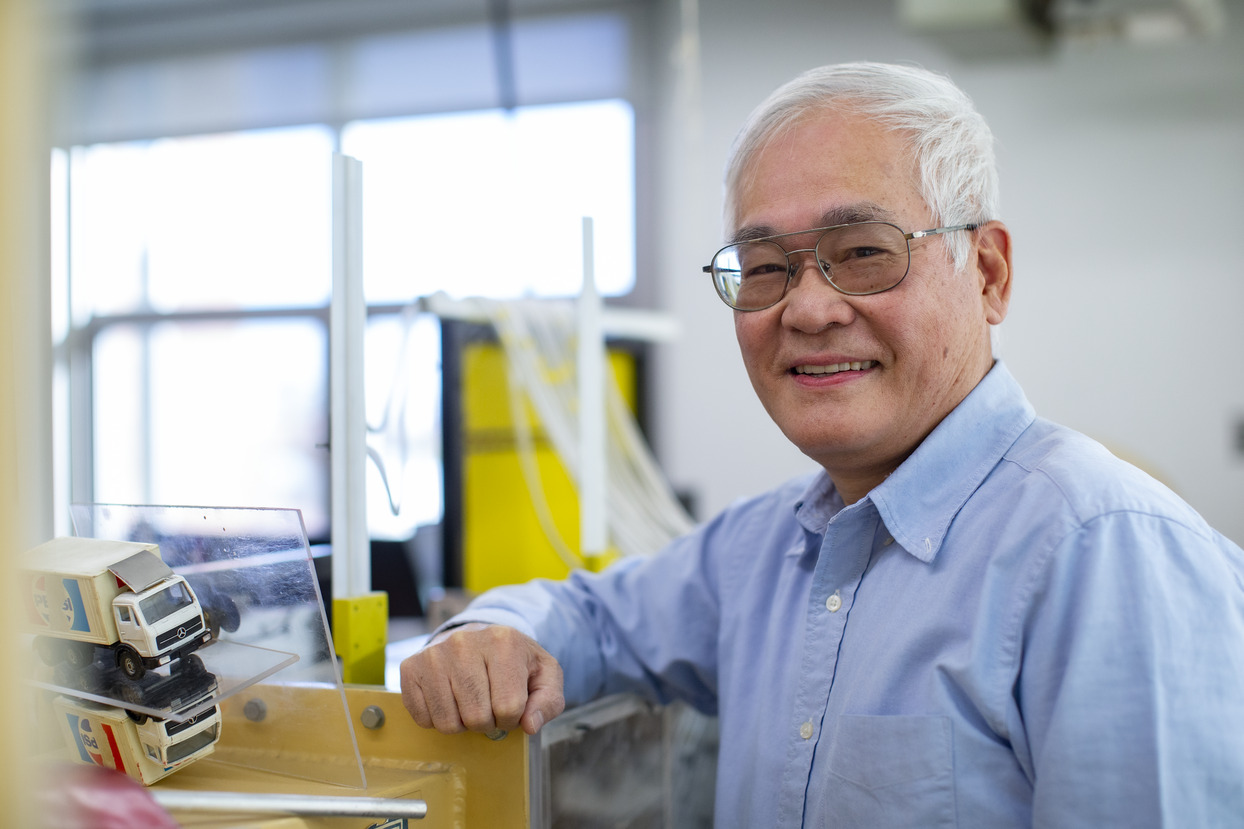During a recent sporting event—perhaps an Eagles game—you might have seen either a blimp from Goodyear or Dick’s Sporting Goods floating through the sky. These days, there are only a few operable blimps on Earth, which are used almost exclusively for marketing and advertising purposes. However, blimps once played an important role in transportation and defense. To understand how blimps work, what their possible functions are and why they are hardly used anymore, Temple Now interviewed Jim Shih-Jiun Chen, professor of mechanical engineering at the College of Engineering.
Temple Now: How do blimps work and what are their most common uses?
Jim Shih-Jiun Chen: They’re basically really big balloons that are controlled by machinery. To be able to float, they’re filled with gas that’s lighter than air—modern blimps usually use helium, but older blimps and airships used hydrogen, which is extremely flammable. The added machinery, controlled by a pilot, allows it to be steered and controlled. A blimp is a type of airship, and airships can either be nonrigid, meaning there is no structure inside; rigid, meaning there is a structure inside to maintain its shape; or semirigid. Blimps are nonrigid so if there is no air inside them, they will totally lose their shape. To contrast, the Hindenburg airship, best known for its involvement the 1937 eponymous disaster in which the vessel caught fire and killed 35 people, was rigid. These days, blimps are mostly only used for marketing purposes, like the famous Goodyear blimp, although sometimes they are also used for government surveillance.
TN: What were the most common uses for blimps in the past?
Chen: In addition to their use in marketing, airships were also popular for passenger travel during the 1920s and 1930s. The Hindenburg, in particular, was a symbol of luxurious air travel, offering passengers comfortable lounges and breathtaking panoramic views. It carried many passengers between Europe, the United States and Brazil, providing a faster alternative to ocean liners while maintaining a similar level of comfort, though at a much higher cost. However, after the Hindenburg disaster in 1937, airships were largely abandoned for passenger travel due to safety concerns, and airplanes began to take over as the primary mode of air travel.
TN: What could blimps and airships be used for in the future?
Chen: In the future, I believe blimps and airships could once again be used for passenger travel. Although airships fell out of favor after the Hindenburg disaster due to safety concerns, modern technology has made them much safer. For instance, we now have sensors that can detect hydrogen leaks, and the materials used to construct airships are lighter and stronger than those from a century ago. Additionally, hydrogen is now cheaper, reducing operational costs for blimps. While helium, though heavier than hydrogen, is preferred for its safety, both gases could play a role in airship operations. Beyond passenger travel, airships could also be used for transporting large cargo, such as wind turbine blades or electrical towers. These bulky items would cause traffic disruptions if moved by land and would require excessive fuel to transport by helicopter, making airships an efficient alternative.
Considering the use of airships in the future is beneficial for the environment, as they are more eco-friendly—they consume less fuel and produce fewer carbon emissions compared to helicopters or airplanes. Airships rely mainly on buoyancy for lift, meaning they don’t need as much fuel to stay airborne. For shipping, they provide a cost-effective alternative to airplanes and are quicker than cargo ships. Furthermore, airships are ideal for reaching remote areas, as they don’t require long runways for takeoff or landing.
Also read
- Engineering at Temple: Build solutions for the future with an education from the College of Engineering.
- Hands-on learning: Students at the College of Engineering have ample opportunities to dive in and learn through experience.
- Become an Owl: Learn more about applying for one of our undergraduate, graduate or professional programs.

